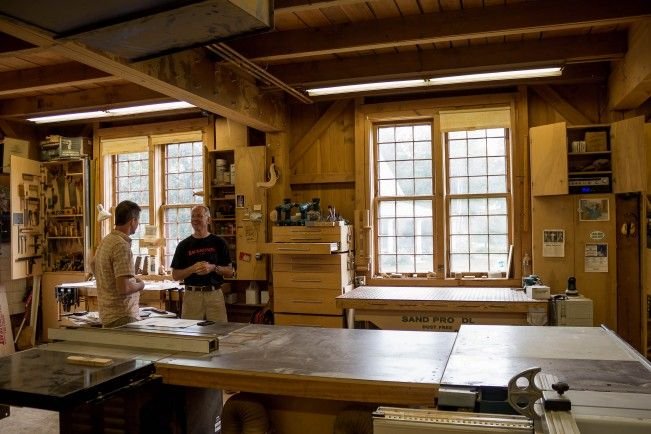Just a Little Gap
You know how it goes. You decide to take on a woodworking project—you’re picturing a beautiful walnut bookshelf or maybe even a dining table that’s worthy of your grandma’s Thanksgiving turkey. You get all excited, pick up your wood, and start measuring. But then, reality sets in. There’s a gap. A gap that’s more of a rift at this point.
So, here I am, sitting in my garage workshop with a cup of coffee that’s gone cold, thinking back to that time I crafted a media console that ended up looking more like a three-legged dog than a sleek piece of furniture. I mean, who doesn’t love a good “oops” story, right?
The Media Console Disaster
It all began on a rainy Saturday morning—hands gripped tightly around my first-course latte. I figured it’d be the perfect day to put together this media console I had been dreaming of. I had visions of my buddies coming over, plopping down in front of the TV, and praising my talents, maybe even asking where I bought it.
So, I measured the boards, a mix of maple and some birch I found at the local lumber yard. I just loooove how the smell of fresh-cut wood fills the air, but that day it mingled with a little bit of panic as I realized, after I’d glued the shelves together, they didn’t perfectly line up.
Oh No, the Gaps!
“Come on! Really?” I nearly yelled at the workbench, as if it had feelings. It felt like the universe conspired against me that day. The shelves had these annoying little gaps, not huge but noticeable if you look close enough—like, “Is it a flaw or a feature?”
Every craftsman worth their salt will tell you, “Measure twice, cut once.” But in my eagerness, I didn’t even consider the gap gauge tool. Who needs a gap gauge, anyway? I thought I was smart enough to eyeball it. Spoiler alert: I wasn’t.
Enter the Gap Gauge
Now, a gap gauge sounds like something out of a sci-fi movie, right? I didn’t even know it existed until a neighboring woodworker, Jim, came over to rescue me from my despair. He’s like an old sage of hardwoods, with a beard that must’ve housed entire birds in its heyday. He juts his chin towards my sorry console and says, “You’re gonna need a gap gauge if you want this to look right.”
At that moment, I felt pretty dumb. But I rolled with it and let Jim guide me to the local tool shop. The shop smelled of sawdust and varnish, with the hum of power tools mingling harmoniously like an orchestra warming up. It was packed with every tool you could think of, and there it was—sitting on the pigmented shelves, a simple little gap gauge.
Simple Yet Effective
I brought it back home, feeling like I just bought a magic wand or something. It was then that I started to realize how simple it was—to identify where those pesky gaps were in my project. Using it felt a bit like being in a game show; I was racing against myself, trying to get everything to fit just right.
When I finally made everything line up, the joy I felt was like cracking open a bottle of cold soda on a hot summer day. I mean, it actually worked! Jim had laughed when I showed him the final product—one of those hearty cackles that still echoes in my mind.
The Paying Off
The thing that stuck with me after that experience was not just how to eliminate gaps but understanding the subtle art of precision and patience in woodworking. You think you’re just whittling away at a piece of wood, but it’s more than that. There’s a connection—between you and the material, between your tools and that vision in your head.
Every time I sit down to watch a movie or pop in a game, I can’t help but admire that media console now, proud of how it turned out. Sure, it took a couple of false starts and a little more effort than expected, but it was all part of the journey—or, at least, that’s what I tell myself now.
A Little Piece of Wisdom
So, if you’re out there pondering over a project or you’re like me, maybe a bit too confident and stubborn sometimes—don’t skip the small tools or the little things. That gap gauge might be a simple tool, but it can save you hours of heartache and frustration.
And honestly? If you’re thinking about diving into woodworking, take that leap. It’s not just about making something with your hands; it’s about learning, picking yourself up after every misstep, and realizing that those gaps—both in your projects and in life—are just moments waiting for a solution. So grab that cup of coffee, roll up your sleeves, and go for it! You’ll thank yourself later.










